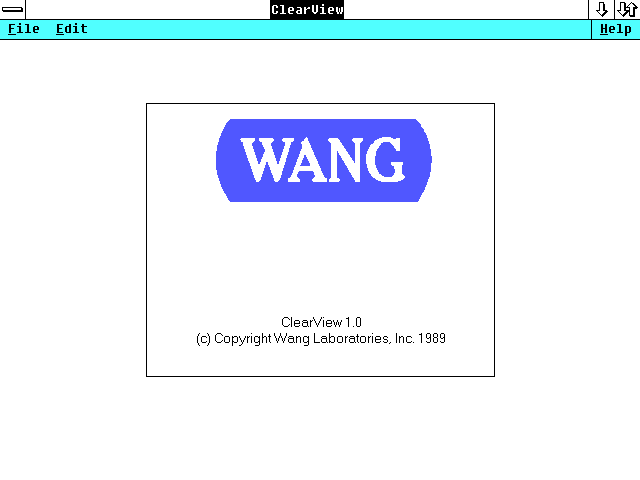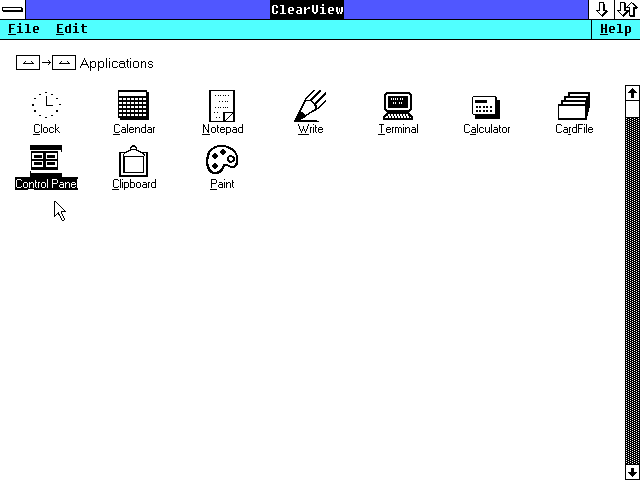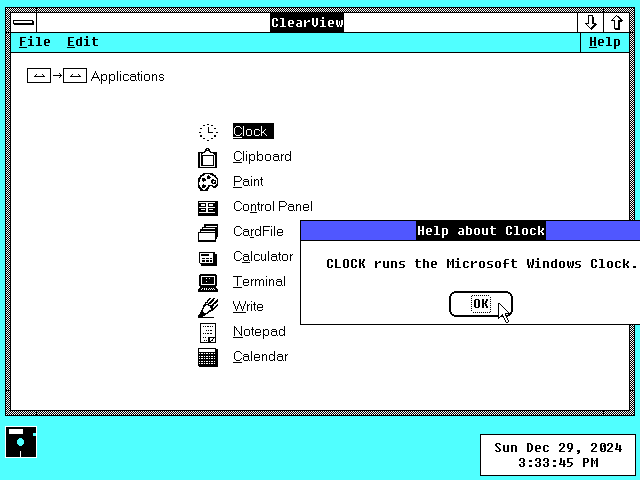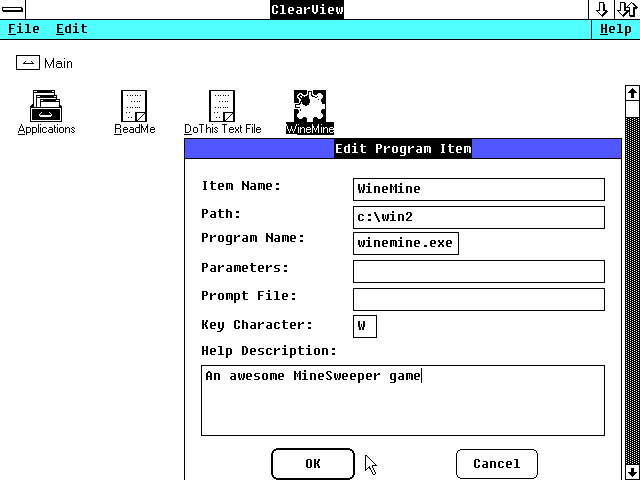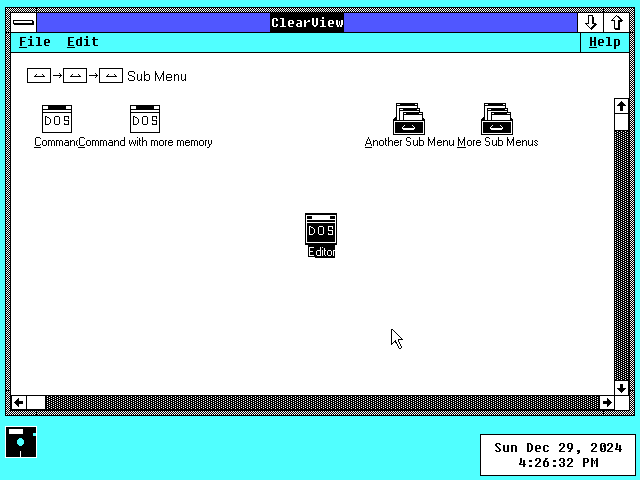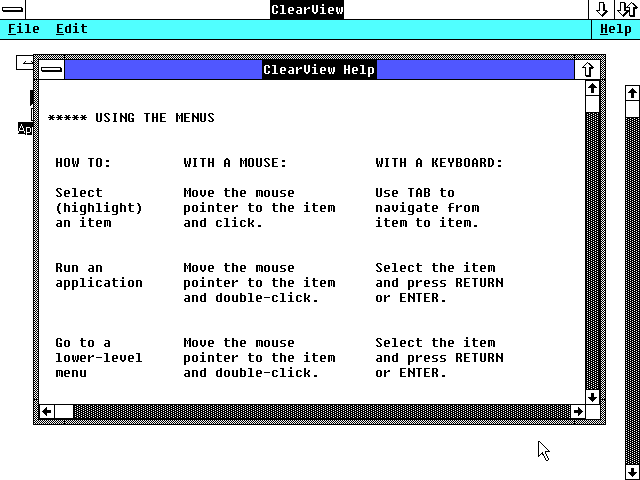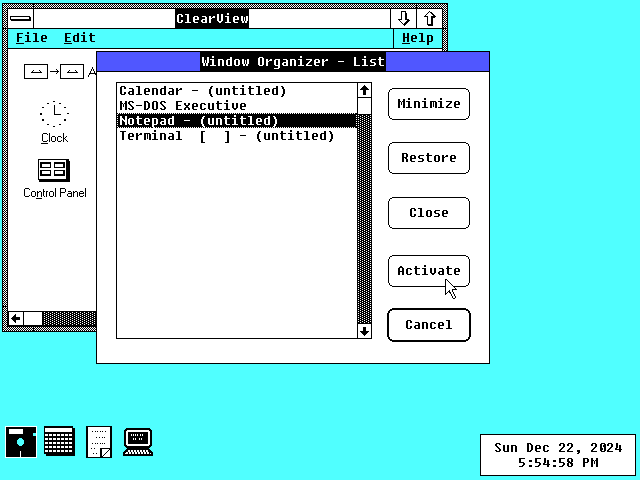|
|
Location: GUIs >
Windows Shells >
Wang ClearView Version 1.01 Screen Shots ClearView is a desktop shell enhancement for Microsoft Windows 2 that adds the equivalent of Microsoft Windows 3.0's Program Manager. ClearView was released in 1989 by Wang Laboratories, and this slightly updated 1.01 version was released in 1990. The timing of this release seems kind of awkward, as it was toward the end of Windows 2's life, and not needed in Windows 3. The ClearView program seems rather rudimentary, so my assumption is that it was probably meant to address the immediate needs of business users that were starting to use Microsoft Windows with version 2. It can be downloaded from here: https://winworldpc.com/product/clearview/1x From what I have read, Wang also released a Unix/Motif version of ClearView.
ClearView includes a small clock application that displays in the corner of the screen. ClearView does not include a file manager, and depends on the MS-DOS Executive for file management. Even though you can launch ClearView directly when Windows starts, the MS-DOS Executive normally stays loaded in the background.
You can assign keyboard shortcuts, and even provide a help description to each application icon. ClearView is entirely application oriented, rather than document oriented. You can manually create an additional icon for an application, such as NotePad or Microsoft Word, and specify a document as a parameter. But you can not create documents or manage files from within ClearView.
Unlike the Windows 3.x Program Manager, ClearView may have a hierarchy of menu groups. Any menu group may contain one or more sub menu groups. The little list of "drawer" icons in the upper left shows you where you are, and you can navigate back up by clicking one of the icons. You can only view one menu group at a time. You can not open more than one ClearView window, and there are no Multiple Document Interface child windows. You can launch DOS programs as well as Windows programs, however running DOS programs inside Windows 2 is much more resource constrained than running them directly from DOS.
That is really about all there is to ClearView. It is not a very fancy Windows shell, but it adds the functionality of Windows 3.x to Windows 2. I believe ClearView was probably targeted at big businesses. Most likely, ClearView would have been installed on business desktops by an administrator who would also have provided a custom set of menus for the user's applications and documents. |
